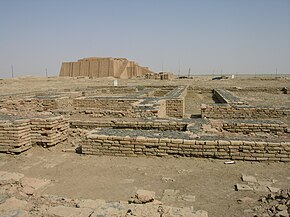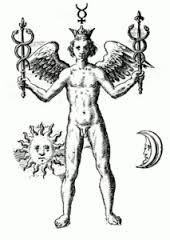Ur (Sumerian: Urim; Akkadian: Uru; Arabic: أور) was an important Sumerian city-state in ancient Mesopotamia, located at the site of modern Tell el-Muqayyar in south Iraq’s Dhi Qar Governorate.
Although Ur was once a coastal city near the mouth of the Euphrates on the Persian Gulf, the coastline has shifted and the city is now well inland, south of the Euphrates on its right bank, 16 kilometres (9.9 mi) from Nasiriyah.
The city dates from the Ubaid period circa 3800 BC, and is recorded in written history as a City State from the 26th century BC, its first recorded king being Mesh-Ane-pada. The city’s patron deity was Nanna (in Akkadian, Sin), the Sumerian and Continue reading


 [Deut. xxxii. 17; Ps. cvi. 37] and
[Deut. xxxii. 17; Ps. cvi. 37] and  [Lev. xvii. 7; II Chron. xi. 15; A. V. “devils”; Luther, “Feldgeister” and “Feldteufel”]; Aramaic, or rabbinical,
[Lev. xvii. 7; II Chron. xi. 15; A. V. “devils”; Luther, “Feldgeister” and “Feldteufel”]; Aramaic, or rabbinical,  and
and 
 as spirits animating all elements of life and inhabiting all parts of the world, have their place in the primitive belief of all tribes and races. When certain deities rose to be the objects of regular worship and became the rulers of the powers of life, demons, or spirits, were subordinated to them. But inasmuch as they were still feared and occasionally worshiped by the populace, they became the objects of popular superstition.
as spirits animating all elements of life and inhabiting all parts of the world, have their place in the primitive belief of all tribes and races. When certain deities rose to be the objects of regular worship and became the rulers of the powers of life, demons, or spirits, were subordinated to them. But inasmuch as they were still feared and occasionally worshiped by the populace, they became the objects of popular superstition. 

 ENUMA ELISH – THE EPIC OF CREATION
ENUMA ELISH – THE EPIC OF CREATION ENUMA ELISH – THE EPIC OF CREATION
ENUMA ELISH – THE EPIC OF CREATION










Recent Comments